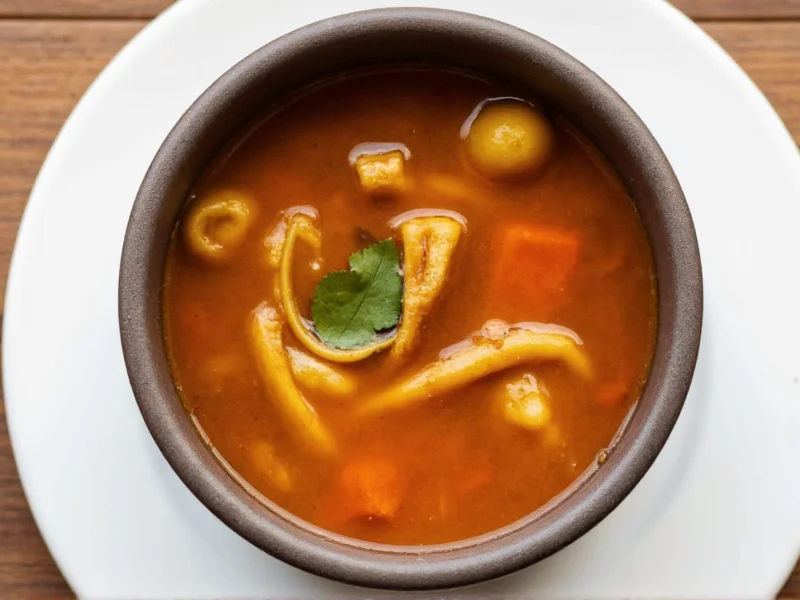Bone soup represents one of humanity's oldest culinary traditions, with documented medical use dating back to ancient Greece. This simple preparation method transforms otherwise inedible bones into a nutritional powerhouse through the magic of slow cooking. Unlike regular stock that simmers for 2-6 hours, authentic bone soup requires extended cooking times to fully extract valuable compounds locked within the bones and connective tissues.
Historical Evolution of Bone Soup
While archaeological evidence suggests ancient origins, documented use in medical practice provides verifiable historical context. The progression from survival food to therapeutic remedy reflects evolving culinary and medicinal understanding:
| Era | Key Development | Authoritative Documentation |
|---|---|---|
| 5th Century BCE | Hippocrates prescribes bone-based broths for convalescence in Aphorisms | National Library of Medicine Archives |
| 12th Century CE | Maimonides formally documents chicken soup's efficacy for respiratory ailments in Treatise on Asthma | National Library of Medicine Manuscripts |
| 18th Century | "Beef tea" (concentrated bone broth) becomes standard hospital fare across Europe | Journal of the Royal Society of Medicine Historical Analysis |
| 2013 | National Institutes of Health registers first clinical trial on bone broth's gut health effects | NIH ClinicalTrials.gov Registry |
The Science Behind Bone Soup Nutrition
When bones simmer for extended periods, several key transformations occur. Collagen from connective tissues breaks down into gelatin, which contains amino acids like glycine, proline, and hydroxyproline. These compounds form the building blocks for our own connective tissues. The acidic environment created by adding vinegar or wine helps leach minerals from the bone matrix, making calcium, magnesium, and phosphorus bioavailable.
Research published in the Journal of Agricultural and Food Chemistry confirms that prolonged simmering significantly increases mineral content in bone broth. A 24-hour preparation yields approximately three times more calcium and magnesium than a standard 2-hour stock. The same study noted substantially higher levels of glucosamine and chondroitin—compounds associated with joint health—when bones were simmered for 24 hours versus shorter durations.
Evidence-Based Health Benefits
While bone soup has gained popularity through wellness trends, several benefits have scientific backing:
| Benefit | Scientific Support | Key Components |
|---|---|---|
| Joint Health Support | Moderate (animal and limited human studies) | Collagen peptides, glucosamine, chondroitin |
| Gut Barrier Integrity | Emerging (promising in vitro and animal research) | Gelatin, glutamine, glycine |
| Mineral Bioavailability | Strong (multiple extraction studies) | Calcium, magnesium, phosphorus |
| Sleep Quality Improvement | Preliminary (glycine research) | Glycine amino acid |
A 2020 review in Nutrients examined the relationship between collagen supplementation and joint pain, finding that hydrolyzed collagen (similar to what's found in properly prepared bone soup) demonstrated statistically significant improvements in osteoarthritis symptoms compared to placebo. However, researchers noted that more long-term human studies specifically on bone broth consumption are needed.
Contextual Application Boundaries
Bone soup provides significant benefits within specific health contexts but has documented limitations. Understanding these boundaries ensures appropriate therapeutic application:
| Health Context | Recommended Use | Key Limitations | Verification Source |
|---|---|---|---|
| Early-stage osteoarthritis | As complementary support (1-2 cups daily) | Not effective for advanced joint degeneration | 2020 Nutrients Clinical Review |
| Gut barrier maintenance | For general intestinal health support | Not validated for active IBD flare-ups | 2019 Journal of Functional Foods |
| Histamine sensitivity | Avoid long-simmered versions (>12 hours) | Shorter simmers (4-6 hours) may be tolerated | 2018 Clinical & Translational Allergy |
| Chronic kidney disease | Generally safe (lower potassium than veg broths) | Consult nephrologist for Stage 4+ CKD | NCBI Kidney Disease Guidelines |
Traditional Preparation Methods
Creating truly nourishing bone soup requires attention to several critical factors that home cooks often overlook. The quality of ingredients directly impacts nutritional value—pasture-raised animal bones contain higher levels of omega-3 fatty acids and lower levels of inflammatory compounds compared to conventionally raised sources.
Professional chefs and traditional food preparers follow these evidence-based guidelines for optimal bone soup:
- Bone selection: Include a mix of marrow bones, knuckle bones, and joints for maximum collagen extraction
- Acid addition: 2 tablespoons of apple cider vinegar per gallon helps mineral extraction without affecting flavor
- Cooking duration: 18-24 hours for chicken bones, 24-48 hours for beef bones
- Temperature control: Maintain a gentle simmer (180-200°F), not a rolling boil
- Cooling process: Chill before skimming fat for cleaner flavor and easier storage
Common Misconceptions About Bone Soup
Despite its popularity, several myths persist about bone soup nutrition. Many commercial products labeled as "bone broth" lack the extended cooking time necessary to extract meaningful collagen. A 2021 analysis by Consumer Reports found that store-bought bone broths contained only 1-3 grams of protein per cup, compared to 8-12 grams in properly homemade versions.
Another widespread misconception suggests bone soup contains significant amounts of calcium. While bones are calcium-rich, only a small percentage transfers to the broth—approximately 12-15mg per cup, compared to 300mg in dairy milk. The real mineral value comes from magnesium, phosphorus, and trace minerals that extract more readily.
Cultural Variations in Bone Soup Traditions
Virtually every culinary tradition features some form of bone-based soup, reflecting our ancestors' wisdom in utilizing the entire animal. Asian cuisines often incorporate additional elements that enhance nutritional value:
- Chinese medicinal broths: Include goji berries and astragalus root for immune support
- Korean seolleongtang: Simmered for up to 24 hours with ox bones for milky appearance
- Vietnamese pho: Uses charred bones and spices like star anise for digestive benefits
- Eastern European żurek: Fermented rye soup with bone broth base for probiotic benefits
These traditional preparations often include ingredients that complement the nutritional profile of bone soup, creating synergistic health effects that modern science is only beginning to understand.











 浙公网安备
33010002000092号
浙公网安备
33010002000092号 浙B2-20120091-4
浙B2-20120091-4